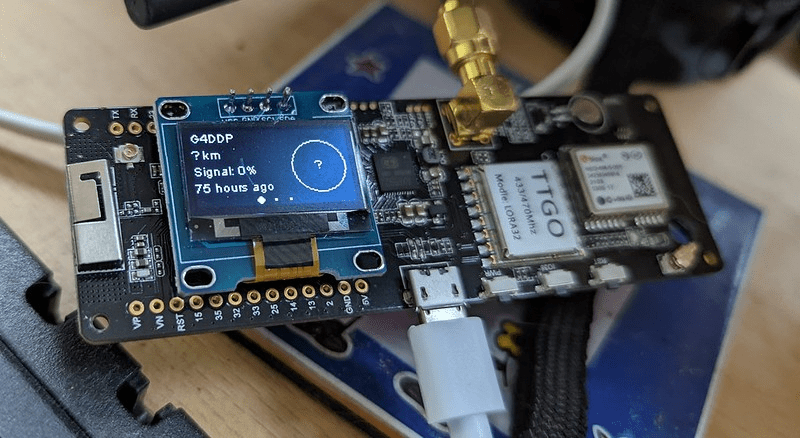Meshtastic: A New Take on LoRa Antennas

Meshtastic® LoRa network and how the Blake UK Eagle and Falcon antennas can be helpful in improving your range of your Meshtastic® device.
Meshtastic® is an open-source mesh network protocol for everyone. https://meshtastic.org
It allows you to create your own wireless network using low-power devices and it is a great way to stay connected in remote areas or to build your own private network.
Getting Started with Meshtastic®
Meshtastic® is easy to get started with. You can purchase a pre-built device such as the RAK Meshtastic® Start Kit, Station G1, LILYGO LoRa T-Beam v1.1 the s3-Core or T-Echo, HELTEC LoRa V3 or build your own using an Arduino or Raspberry Pi. Once you have your device, you can flash the Meshtastic® firmware and start using it.
Using Meshtastic®
- Meshtastic® can be used for a variety of purposes, including:
- Sending and receiving text messages
- Sharing GPS coordinates
- Tracking devices
- Sending and receiving data
Building Your Own Meshtastic® Network
Meshtastic® is a great way to build your own wireless network. It is affordable, easy to use, and can be used for a variety of purposes. With the right antennas and accessories, you can create a network that meets your needs.
Meshtastic® is still under development, so there may be some bugs and limitations.
The range of your Meshtastic® network will depend on several factors, including the terrain, the power of your devices, and the antennas you use.
Antennas
The two Blake UK LoRa Antenna can be used to improve the range of your Meshtastic® network.
The 868MHz 8dBi antenna is a good all-around antenna that will provide good range in most conditions. The 868MHz 12dBi antenna is a more directional antenna that can be used to extend the range of your network towards the horizon.
Accessories
We also offer cables that can be used to connect your Meshtastic® device to the antenna.
The LSR400 is a 10-meter cable that can be used to connect your device to an antenna for greater distances between the antenna and the LoRa device at lower losses.
We also offer a short length of cable type LSR200 at 2-meters
The performance difference between an 8.5dBi and a 12dBi vertical omnidirectional antenna is primarily rooted in their gain, beamwidth, and coverage distance. Here is an explanation focusing on these aspects, along with the advantages and disadvantages of each antenna:
Gain and Performance
- 8.5dBi Antenna: With a lower gain, this antenna distributes its signal more evenly around its axis. It’s better suited for environments where coverage over a wide area is needed, rather than focusing on long-distance transmission.
- 12dBi Antenna: Higher gain means this antenna can send and receive signals over greater distances but with a narrower focus. It's ideal for reaching further locations but might not cover areas close to the antenna base as evenly as the lower gain antenna.
Beamwidth
- 8.5dBi Antenna: This antenna has a wider beamwidth, which means the signal is spread out more, covering a broader area around the antenna. The wider beamwidth makes it more suitable for covering areas closer to the antenna.
- 12dBi Antenna: A narrower beamwidth focuses the signal more tightly in a specific direction. This characteristic allows the antenna to reach further distances but reduces the area of coverage directly around the antenna.
Expected Distance
- 8.5dBi Antenna: While it provides a wider coverage area, its reach in terms of distance is shorter compared to higher gain antennas. It's more efficient for local area networks or settings where the signal needs to be distributed over a broad area.
- 12dBi Antenna: It can cover significantly longer distances, making it ideal for point-to-point connections or when needing to bridge networks over greater spans.
Advantages and Disadvantages:
- 8.5dBi Antenna:
Advantages: Better for wide-area coverage, more uniform signal distribution close to the antenna, ideal for general use in residential or smaller environments.
Disadvantages: Limited long-distance capability, potentially less efficient in penetrating obstacles or reaching outlying areas.
- 12dBi Antenna:
Advantages: Excellent for long-distance coverage, can bridge far-off networks effectively, suited for outdoor applications or extending networks between buildings.
Disadvantages: Narrower coverage area can lead to dead zones directly around the antenna, potentially overkill for small, confined spaces where wide coverage is needed.
In summary, the choice between an 8.5dBi and a 12dBi vertical omnidirectional antenna depends on the specific needs of the network setup. For broad coverage in a confined area, the 8.5dBi antenna is more suitable, whereas for extending the reach of a network over longer distances, the 12dBi antenna is the better option. Each antenna serves distinct purposes and excels in different environments, highlighting the importance of aligning the antenna’s characteristics with the network's requirements.








 Quick Add
Quick Add